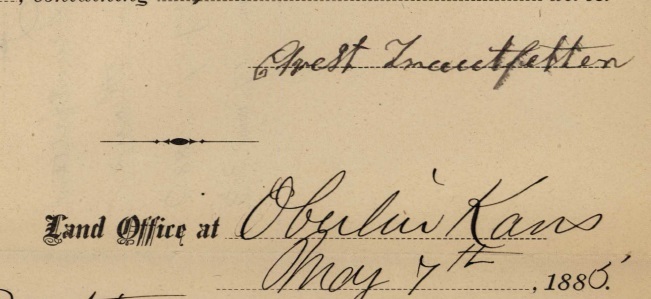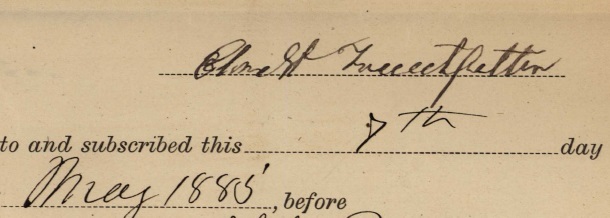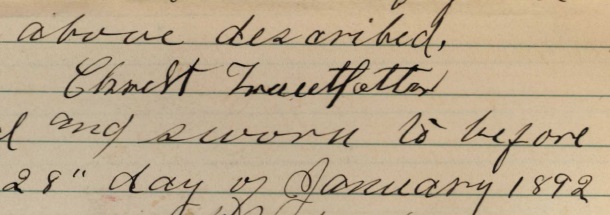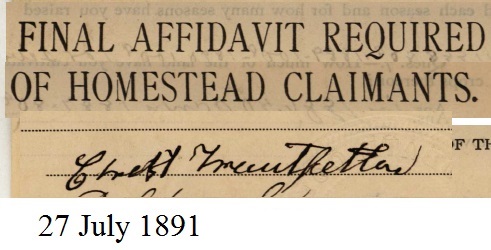Handwriting and name spelling presents all sorts of problems for the genealogist. The “signature” of Christian Troutfetter appears six times in his completed homestead application file. At least the documents claim his signature appears six times. 
The signatures look similar, except for the one on 8 June 1891. There’s little doubt that Christian didn’t actually write his name above the line where it says “signature of claimant.” The handwriting is similar to the handwriting used to write the date and it’s very different from Troutfetter’s somewhat more labored and slightly more German-looking signature.
Christian never spelled out his entire first name. It is difficult to tell if he meant to write Troutfetter or Trautfetter. Because of that, and due to the fact Christian used Troutfetter in other records while living in Kansas, he has been styled as Christian Troutfetter.
The signatures only range over a period of seven years and do not appear to have changed much over that time.
The image from the 1891 “Final Affidavit Required of Homestead Claimants” has been slightly altered (Christian’s signature has been “moved” to the document title, the remaining portion of the document cut away and the date added). All other images were simply cut from the original document with no additional manipulation carried out.
Reminders from this set of signatures:
- Any one item can be incomplete or wrong–never draw a conclusion based only one item. Here that was easy to avoid as there were several signatures with which to compare. Sometimes we don’t always have other sources of information available.
- Record clerks do not always follow directions. Christian’s signature apparently was not actually made on that one line.
- One error won’t throw everything out. Apparently the lack of a “real signature” wasn’t noticed by the higher level administrator who reviewed this paperwork before the patent was issued.
- Always read through everything you have.






One response
Great images of his signatures. I’d argue that the 3rd one was not his, but a clerk’s. Many of the letters are written in the more Latin style, especially the r and h.